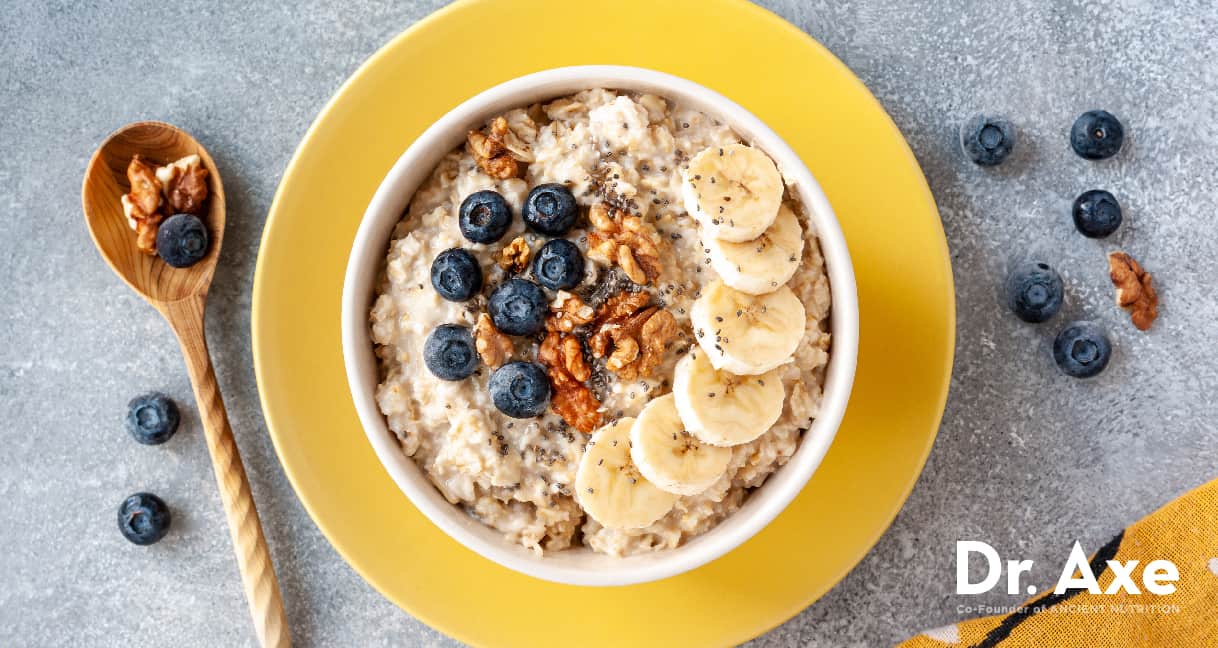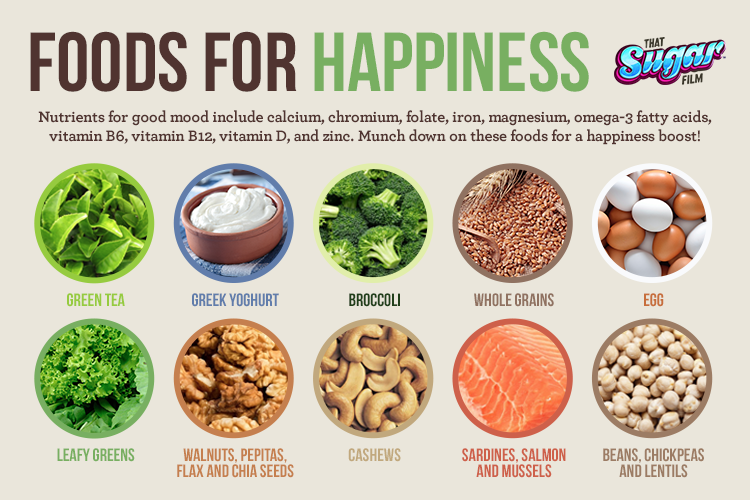Embark on a delightful journey into the world of happy foods, where nourishment extends beyond physical sustenance to embrace emotional well-being. Discover the intricate interplay between food, mood, and the gut-brain connection, unraveling the secrets to unlocking happiness through mindful eating practices.
From the nutritional value of serotonin-boosting foods to the emotional impact of culinary experiences, this comprehensive guide explores the multifaceted relationship between food and happiness. Prepare to savor every bite as we delve into the science and psychology behind happy foods, empowering you to make informed choices that nurture both your body and mind.
Mood-Boosting Compounds
Our emotional well-being is intricately linked to the delicate balance of neurotransmitters in our brains. Serotonin and dopamine, two prominent neurotransmitters, play a pivotal role in regulating mood and happiness. Certain foods contain compounds that stimulate the release of these neurotransmitters, contributing to a positive emotional state.
Serotonin-Boosting Foods
Serotonin, often referred to as the “feel-good” neurotransmitter, is crucial for maintaining a sense of well-being and contentment. Foods rich in tryptophan, an amino acid that the body converts into serotonin, can help boost serotonin levels. These include:
- Eggs
- Dairy products (milk, cheese, yogurt)
- Nuts and seeds
- Bananas
- Whole grains
Tryptophan-rich foods promote relaxation and sleep, contributing to overall mood improvement.
Dopamine-Boosting Foods
Dopamine, another key neurotransmitter, is associated with motivation, reward, and pleasure. Foods that contain tyrosine, a precursor to dopamine, can stimulate its release. Some dopamine-boosting foods include:
- Avocados
- Almonds
- Beans
- Green tea
- Chocolate
Dopamine-rich foods enhance focus, concentration, and a sense of accomplishment, contributing to a positive mood.
Gut-Brain Connection

Our gut is home to trillions of bacteria, viruses, and other microorganisms that form a complex ecosystem known as the gut microbiome. These tiny organisms play a crucial role in various bodily functions, including digestion, immunity, and mood regulation.
The gut-brain axis is a bidirectional communication pathway between the gut and the brain. It involves the vagus nerve, hormones, and immune molecules that connect the gut to the brain’s emotional and cognitive centers.
Gut Health and Mood
Research has shown that imbalances in the gut microbiome can contribute to mood disorders such as depression and anxiety. When the gut microbiome is healthy and diverse, it produces beneficial compounds like serotonin, a neurotransmitter that promotes happiness and well-being.
Happy Foods for Gut Health
Consuming foods that support a healthy gut microbiome can promote happiness. These foods include:
- Fermented foods (e.g., yogurt, kefir, sauerkraut) contain probiotics, live microorganisms that benefit the gut microbiome.
- Prebiotic foods (e.g., bananas, onions, garlic) contain non-digestible fibers that feed beneficial bacteria in the gut.
- Fruits and vegetables are rich in antioxidants and fiber, which support overall gut health.
Role of Probiotics and Prebiotics
Probiotics are live microorganisms that, when consumed in adequate amounts, confer health benefits to the host. They can help restore balance to the gut microbiome and improve mood by increasing serotonin production.
Prebiotics are non-digestible food ingredients that promote the growth and activity of beneficial bacteria in the gut. They support the proliferation of probiotics and contribute to a healthy gut environment.
Emotional Impact of Food

Food choices are influenced by a complex interplay of emotional and psychological factors. Emotional eating, the consumption of food in response to emotions rather than hunger, is a common phenomenon that can have both positive and negative consequences. Positive emotions, such as joy, contentment, and excitement, can trigger cravings for certain foods, while negative emotions, such as stress, anxiety, and sadness, can lead to comfort eating or overeating.
Cultural and social associations also play a significant role in shaping food preferences and the emotional significance attached to them. In many cultures, certain foods are associated with specific occasions, traditions, or memories, evoking feelings of nostalgia, belonging, and comfort.
For example, the smell of freshly baked bread may trigger memories of childhood and family gatherings.
Positive Memories and Experiences
Food can play a central role in creating positive memories and experiences. Family meals, dinner parties, and special occasions often involve the sharing of food, which can foster a sense of connection and belonging. The flavors, textures, and aromas of food can become associated with happy times and positive emotions, creating a lasting bond between food and well-being.
Mindful Eating for Happiness
Mindful eating is a practice that involves paying full attention to the experience of eating, without judgment or distraction. It encourages individuals to be aware of their thoughts, feelings, and physical sensations while consuming food.
Mindful eating offers several benefits for well-being. It promotes a healthier relationship with food, reduces stress and anxiety, and enhances overall mood. By focusing on the present moment and savoring each bite, individuals can gain a deeper appreciation for their food and cultivate a sense of contentment.
Incorporating Happy Foods into Mindful Eating
Incorporating happy foods into a mindful eating practice can further enhance its mood-boosting effects. When choosing foods, consider their nutritional value, as well as their ability to evoke positive emotions. Some happy foods include:
- Fruits and vegetables: Rich in vitamins, minerals, and antioxidants, fruits and vegetables contribute to overall well-being and provide a natural energy boost.
- Whole grains: Whole grains are a good source of fiber, which helps regulate blood sugar levels and promotes satiety. They also contain B vitamins, which are essential for maintaining a healthy nervous system.
- Lean protein: Lean protein sources, such as fish, chicken, and beans, provide essential amino acids that support brain function and contribute to feelings of fullness.
- Dark chocolate: Dark chocolate contains compounds that have mood-boosting effects. It is rich in antioxidants and may help improve cognitive function.
Savoring and Appreciating Food for Emotional Nourishment
Savoring and appreciating food is an important aspect of mindful eating. When individuals take the time to fully engage with their food, they are more likely to experience a sense of gratitude and contentment. This can lead to a more positive emotional state and a greater appreciation for the nourishment that food provides.
To savor and appreciate food, consider the following tips:
- Eat slowly and mindfully: Take your time while eating, and pay attention to the taste, texture, and aroma of your food.
- Be grateful for your food: Before eating, take a moment to appreciate the food that you have and the people who made it possible.
- Eat in a calm and peaceful environment: Avoid eating in front of the TV or while working. Instead, create a calm and peaceful environment where you can fully focus on your meal.
Questions Often Asked: Happy Foods
What are the key nutrients found in happy foods?
Happy foods are rich in nutrients such as tryptophan, omega-3 fatty acids, vitamins B and D, and antioxidants.
How do happy foods boost mood?
Happy foods contain compounds that stimulate the release of neurotransmitters like serotonin and dopamine, which have mood-regulating effects.
What is the role of the gut-brain connection in happy foods?
The gut-brain connection suggests that a healthy gut microbiome can support mood regulation, and happy foods can promote gut health.
How can mindful eating enhance the benefits of happy foods?
Mindful eating involves paying attention to the present moment while eating, which can help us savor food, appreciate its nutritional value, and make healthier choices.
